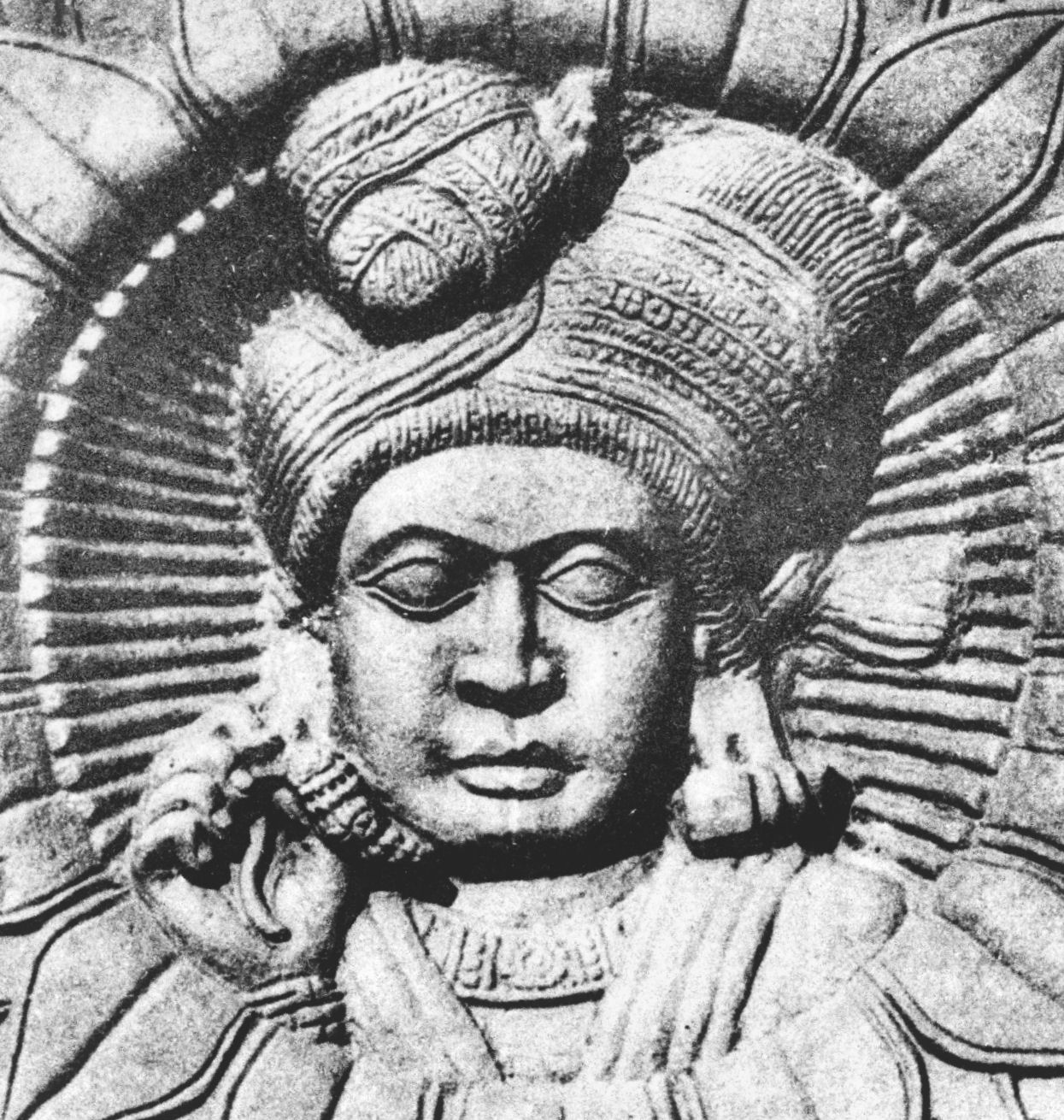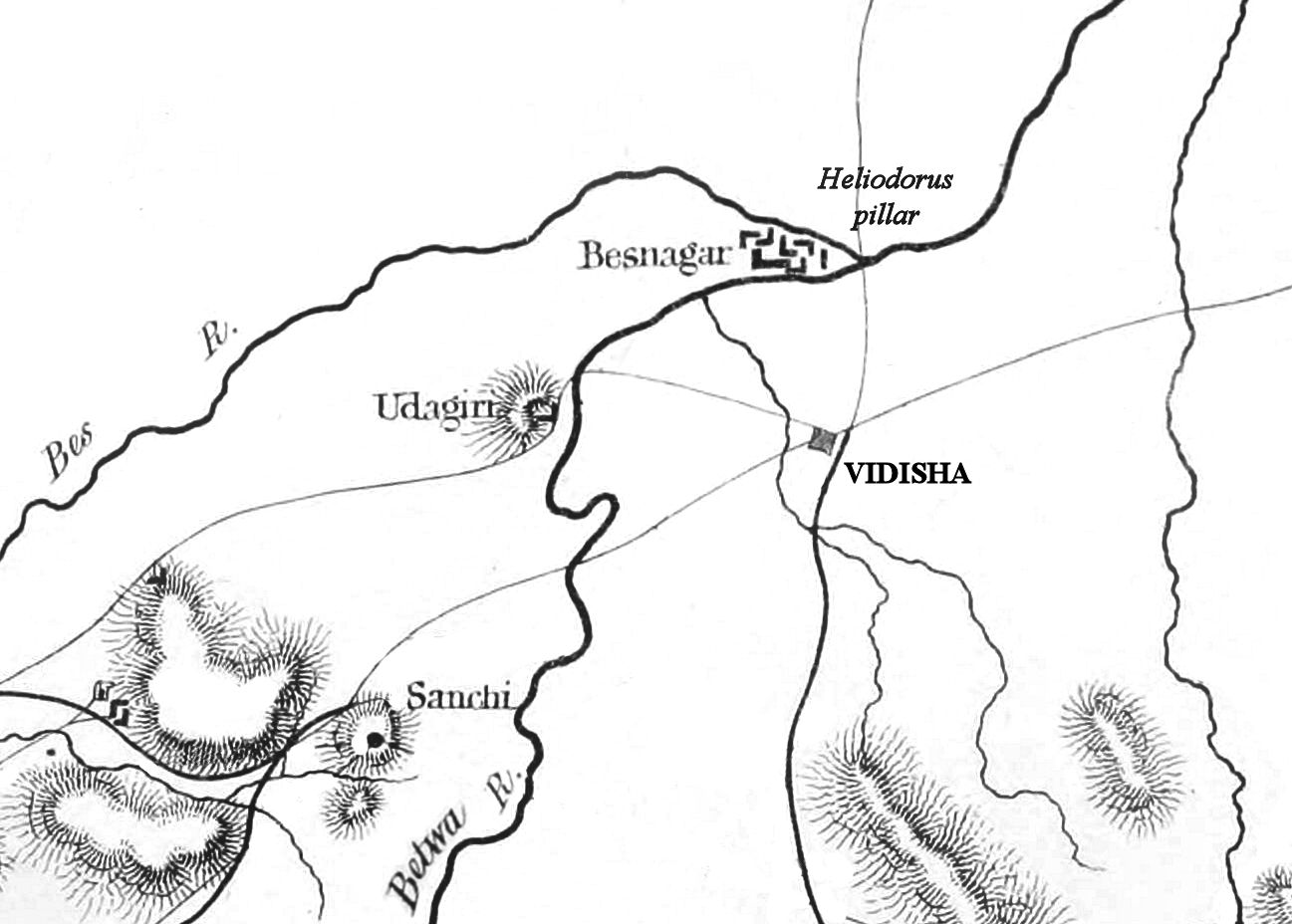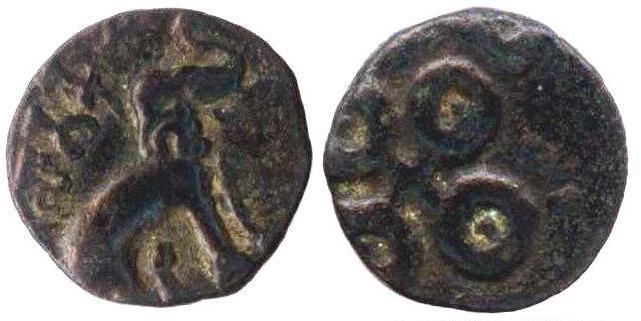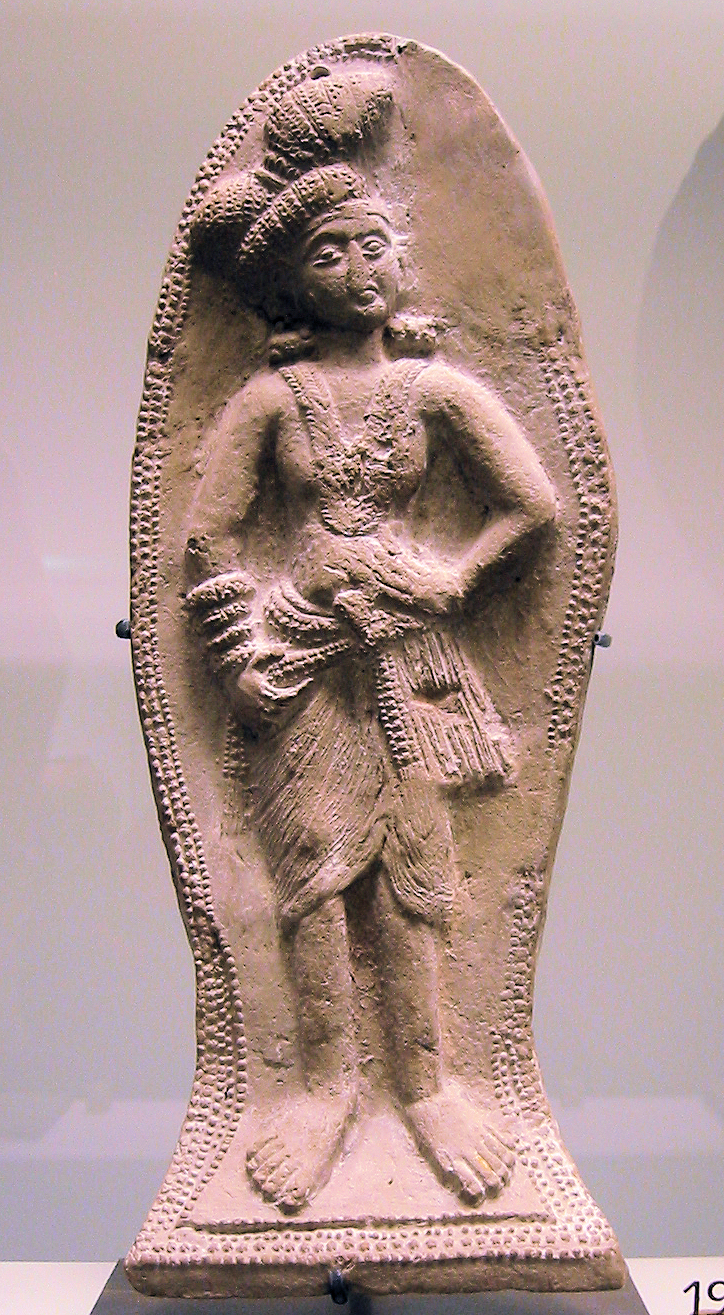|
Sunga
The Shunga Empire ( IAST: ') was an ancient Indian dynasty from Magadha that controlled areas of the most of the northern Indian subcontinent from around 185 to 73 BCE. The dynasty was established by Pushyamitra, after taking the throne of the Maurya Empire. Its capital was Pataliputra, but later emperors such as Bhagabhadra also held court at Besnagar (modern Vidisha) in eastern Malwa. Pushyamitra ruled for 36 years and was succeeded by his son Agnimitra. There were ten Shunga rulers. However, after the death of Agnimitra, the second king of the dynasty, the empire rapidly disintegrated:K.A. Nilkantha Shastri (1970)''A Comprehensive History of India: Volume 2'' p.108: "Soon after Agnimitra there was no 'Sunga empire'." inscriptions and coins indicate that much of northern and central India consisted of small kingdoms and city-states that were independent of any Shunga hegemony.Bhandare, Shailendra. "Numismatics and History: The Maurya-Gupta Interlude in the Gangetic Plain". i' ... [...More Info...] [...Related Items...] OR: [Wikipedia] [Google] [Baidu] |
Sanchi
Sanchi is a Buddhist complex, famous for its Great Stupa, on a hilltop at Sanchi Town in Raisen District of the State of Madhya Pradesh, India. It is located, about 23 kilometres from Raisen town, district headquarter and north-east of Bhopal, capital of Madhya Pradesh. The Great Stupa at Sanchi is one of the oldest stone structures in India, and an important monument of Indian Architecture. It was originally commissioned by the Mauryan emperor Ashoka the Great in the 3rd century BCE. Its nucleus was a simple hemispherical brick structure built over the relics of the Buddha. It was crowned by the '''chhatra, a parasol-like structure symbolising high rank, which was intended to honour and shelter the relics. The original construction work of this stupa was overseen by Ashoka, whose wife Devi was the daughter of a merchant of nearby Vidisha. Sanchi was also her birthplace as well as the venue of her and Ashoka's wedding. In the 1st century BCE, four elaborately carved toranas ... [...More Info...] [...Related Items...] OR: [Wikipedia] [Google] [Baidu] |
Indo-Greeks
The Indo-Greek Kingdom, or Graeco-Indian Kingdom, also known historically as the Yavana Kingdom (Yavanarajya), was a Hellenistic-era Greek kingdom covering various parts of Afghanistan and the northwestern regions of the Indian subcontinent (parts of modern-day Pakistan and northwestern India). This kingdom was in existence from ca. 200 BC to ca. 1 BC. During its existence the kingdom was ruled over by 30 successive kings. Menander I, being the most well known amongst the Indo-Greek kings, is often referred to simply as ''“Menander,”'' despite the fact that there was indeed another Indo-Greek King known as Menander II. Menander I's capital was at Sagala in the Punjab (present-day Sialkot). The kingdom was founded when the Graeco-Bactrian king Demetrius (and later Eucratides) invaded India from Bactria in 200 BC. The Greeks in the Indian Subcontinent were eventually divided from the Graeco-Bactrians centered on Bactria (now the border between Afghanistan and Uzbekis ... [...More Info...] [...Related Items...] OR: [Wikipedia] [Google] [Baidu] |
Indo-Greek Kingdom
The Indo-Greek Kingdom, or Graeco-Indian Kingdom, also known historically as the Yavana Kingdom (Yavanarajya), was a Hellenistic-era Greek kingdom covering various parts of Afghanistan and the northwestern regions of the Indian subcontinent (parts of modern-day Pakistan and northwestern India). This kingdom was in existence from ca. 200 BC to ca. 1 BC. During its existence the kingdom was ruled over by 30 successive kings. Menander I, being the most well known amongst the Indo-Greek kings, is often referred to simply as ''“Menander,”'' despite the fact that there was indeed another Indo-Greek King known as Menander II. Menander I's capital was at Sagala in the Punjab (present-day Sialkot). The kingdom was founded when the Graeco-Bactrian king Demetrius (and later Eucratides) invaded India from Bactria in 200 BC. The Greeks in the Indian Subcontinent were eventually divided from the Graeco-Bactrians centered on Bactria (now the border between Afghanistan ... [...More Info...] [...Related Items...] OR: [Wikipedia] [Google] [Baidu] |
Bharhut
Bharhut is a village located in the Satna district of Madhya Pradesh, central India. It is known for its famous relics from a Buddhist stupa. What makes Bharhut panels unique is that each panel is explicitly labelled in Brahmi characters mentioning what the panel depicts. The major donor for the Bharhut stupa was King Dhanabhuti. The Bharhut sculptures represent some of the earliest examples of Indian and Buddhist art, later than the monumental art of Ashoka (circa 260 BCE), and slightly later than the early Shunga-period reliefs on railings at Sanchi Stupa No.2 (starting circa 115 BCE). Though more provincial in quality than the sculpture at Sanchi, Amaravati Stupa and some other sites, a large amount of sculpture has survived, generally in good condition. Recent authors date the reliefs of the railings of Bharhut circa 125–100 BCE, and clearly after Sanchi Stupa No.2, compared to which Bharhut has a much more developed iconography. The torana gateway was made slightly ... [...More Info...] [...Related Items...] OR: [Wikipedia] [Google] [Baidu] |
Pataliputra
Pataliputra ( IAST: ), adjacent to modern-day Patna, was a city in ancient India, originally built by Magadha ruler Ajatashatru in 490 BCE as a small fort () near the Ganges river.. Udayin laid the foundation of the city of Pataliputra at the confluence of two rivers, the Son and the Ganges. He shifted his capital from Rajgriha to Patliputra due to the latter's central location in the empire. It became the capital of major powers in ancient India, such as the Shishunaga Empire (c. 413–345 BCE), Nanda Empire (c. 460 or 420–325 BCE), the Maurya Empire (c. 320–180 BCE), the Gupta Empire (c. 320–550 CE), and the Pala Empire (c. 750–1200 CE). During the Maurya period (see below), it became one of the largest cities in the world. As per the Greek diplomat, traveler and historian Megasthenes, during the Mauryan Empire (c. 320–180 BCE) it was among the first cities in the world to have a highly efficient form of local self government. Afterwards, Sher Shah S ... [...More Info...] [...Related Items...] OR: [Wikipedia] [Google] [Baidu] |
Pushyamitra Shunga
Pushyamitra Shunga ( IAST: ) or Pushpamitra Shunga ( IAST: ) (ruled ) was the co-founder and the first or second ruler of the Shunga Empire which he and Gopāla established against the Maurya Empire. His original name was Puṣpaka or Puṣpamitra and the confusion between Puṣyamitra and Puṣpamitra arose because of the erroneous readings of 'p' and 'y' in the manuscripts. Pushyamitra is recorded to have performed numerous Ashvamedha campaigns to legitimize his right to rule. Inscriptions of the Shungas have been found as far as the Ayodhya (the Dhanadeva-Ayodhya inscription), and the '' Divyavadana'' mentions that his empire stretched as far as Sakala (Sialkot) in the Punjab region in the northwest. The Buddhist texts claim that Pushyamitra persecuted the Buddhists; scholars have rejected these claims. Ancestry According to the Puranas, Pushyamitra became the king after killing his master Brihadratha, the last Mauryan king. However, the Buddhist text '' Divyavad ... [...More Info...] [...Related Items...] OR: [Wikipedia] [Google] [Baidu] |
Mitra Dynasty (Mathura)
The Mitra dynasty refers to a group of local rulers whose name incorporated the suffix "-mitra" and who are thought to have ruled in the area of Mathura from around 150 BCE to 50 BCE, at the time of Indo-Greek hegemony over the region, and possibly in a tributary relationship with them.Indian Numismatic Studies K. D. Bajpai, Abhinav Publications, 2004, p.10/ref> They are not known to have been satraps nor kings, and their coins only bear their name without any title, therefore they are sometimes simply called "the Mitra rulers of Mathura". Alternatively, they have been dated from 100 BCE to 20 BCE. The Mitra dynasty was replaced by the Indo-Scythian Northern Satraps from around 60 BCE. Some sources consider that the Mitra dynasty ruled at a later date, during the 1st or 2nd century CE, and that they ruled from Mathura to Saketa, where they replaced the Deva dynasty.Ayodhya Revisited by Kunal Kishore p.2/ref> In addition to the Mitra dynasties of Saketa (Kosala kingdom) and M ... [...More Info...] [...Related Items...] OR: [Wikipedia] [Google] [Baidu] |
Vidisha
Vidisha (विदिशा, formerly known as Bhelsa and known as Besnagar in ancient times) is a city in central Madhya Pradesh, India. It is located 62.5 km northeast of the state capital, Bhopal. The name "Vidisha" is derived from the nearby river "Bais", mentioned in the Puranas. The district was created as Bhilsa District in 1904 by joining the tehsils of Vidisha (also known as Bhilsa) and Basoda (but not Basoda State) which were then part of Gwalior state. After India's independence in 1947, the former princely state of Gwalior became part of Madhya Bharat state, which was formed in 1948. Vidishā was the administrative headquarters of Bhelsa, or Bhilsa, during the Medieval period. It was renamed Vidisha in 1956. Vidisha is also amongst the 112 Aspirational District in the Aspirational District Programme launched by NITI Aayog in 2018. Demographics As of the 2011 Census of India, Vidisha had a population of 155,959. Males constitute 53.21% of the population an ... [...More Info...] [...Related Items...] OR: [Wikipedia] [Google] [Baidu] |
Satavahanas
The Satavahanas (''Sādavāhana'' or ''Sātavāhana'', IAST: ), also referred to as the Andhras in the Puranas, were an ancient Indian dynasty based in the Deccan region. Most modern scholars believe that the Satavahana rule began in the late second century BCE and lasted until the early third century CE, although some assign the beginning of their rule to as early as the 3rd century BCE based on the Puranas, but uncorroborated by archaeological evidence. The Satavahana kingdom mainly comprised the present-day Andhra Pradesh, Telangana, and Maharashtra. At different times, their rule extended to parts of modern Gujarat, Madhya Pradesh, and Karnataka. The dynasty had different capital cities at different times, including Pratishthana (Paithan) and Amaravati ( Dharanikota). The origin of the dynasty is uncertain, but according to the Puranas, their first king overthrew the Kanva dynasty. In the post- Maurya era, the Satavahanas established peace in the Deccan region and resi ... [...More Info...] [...Related Items...] OR: [Wikipedia] [Google] [Baidu] |
Maurya Empire
The Maurya Empire, or the Mauryan Empire, was a geographically extensive Iron Age historical power in the Indian subcontinent based in Magadha, having been founded by Chandragupta Maurya in 322 BCE, and existing in loose-knit fashion until 185 BCE. Quote: "Magadha power came to extend over the main cities and communication routes of the Ganges basin. Then, under Chandragupta Maurya (c.321–297 bce), and subsequently Ashoka his grandson, Pataliputra became the centre of the loose-knit Mauryan 'Empire' which during Ashoka's reign (c.268–232 bce) briefly had a presence throughout the main urban centres and arteries of the subcontinent, except for the extreme south." The Maurya Empire was centralized by the conquest of the Indo-Gangetic Plain, and its capital city was located at Pataliputra (modern Patna). Outside this imperial center, the empire's geographical extent was dependent on the loyalty of military commanders who controlled the armed cities sprinkling it. During ... [...More Info...] [...Related Items...] OR: [Wikipedia] [Google] [Baidu] |
Bhagabhadra
Bhagabhadra ( Brāhmī: 𑀪𑀸𑀕𑀪𑀤𑁆𑀭 , ) was one of the kings of the Indian Shunga dynasty. He ruled in north, central India around from 114 BCE to 83 BCE. Although the capital of the Shungas was at Pataliputra, he was also known to have held court at Vidisha. It is thought that the name Bhagabhadra also appears in the regnal lists of the Shungas in the Puranic records, under the name Bhadraka, fifth ruler of the Shungas. Heliodorus inscription He is best known from an inscription at the site of Vidisha in central India, the Heliodorus pillar, in which contacts with an embassy from the Indo-Greek king Antialcidas is recorded, and where he is named "Kasiputra Bhagabhadra, the Saviour, son of the princess from Benares": Translation: :(Archaeological Survey of India, Annual Report (1908-1909)) This inscription is important in that it tends to validate that the Shungas ruled in the area of Vidisa around 100 BCE. This is also corroborated by some artistic realiz ... [...More Info...] [...Related Items...] OR: [Wikipedia] [Google] [Baidu] |
Satavahana Dynasty
The Satavahanas (''Sādavāhana'' or ''Sātavāhana'', IAST: ), also referred to as the Andhras in the Puranas, were an ancient Indian dynasty based in the Deccan region. Most modern scholars believe that the Satavahana rule began in the late second century BCE and lasted until the early third century CE, although some assign the beginning of their rule to as early as the 3rd century BCE based on the Puranas, but uncorroborated by archaeological evidence. The Satavahana kingdom mainly comprised the present-day Andhra Pradesh, Telangana, and Maharashtra. At different times, their rule extended to parts of modern Gujarat, Madhya Pradesh, and Karnataka. The dynasty had different capital cities at different times, including Pratishthana (Paithan) and Amaravati ( Dharanikota). The origin of the dynasty is uncertain, but according to the Puranas, their first king overthrew the Kanva dynasty. In the post- Maurya era, the Satavahanas established peace in the Deccan region and re ... [...More Info...] [...Related Items...] OR: [Wikipedia] [Google] [Baidu] |









.jpg)

